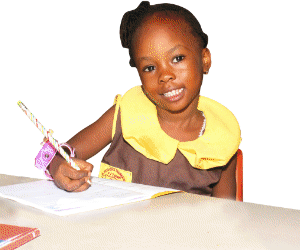By Hajaratu Kalokoh
The Ministry of Agriculture, Forestry and Food Security (MAFFS) has announced an elaborate plan to collaborate with the sister Ministries of Defense and Youth Affairs to embark on a massive rice production scheme.
This collaborative project aims at cultivating 170, 000 hectares of rice over the next three years. MAFFS officials said Thursday in a press briefing the goal is to produce 310, 000 metric tons of rice.
Deputy Minister of Agriculture, Sam-King Brima, said the move is part of government’s drive towards attaining food self-sufficiency.
“The drive here is; if all else fails, the Ministry of Agriculture in partnership with the two ministries should be able to address the gap that they have currently, which stands at 300, 000 metric tons,” Mr Brima told journalist at the weekly government press briefing hosted by the Ministry of Information and Communication.
Explaining the arrangement of the collaboration, the official said each ministry has been allocated part of the 170, 000 hectares of land as their target.
“Because of the current capacity in the Ministry of Youth Affairs, the ministry will have 150, 000 hectares which will be divided in to three: 50,000 hectares every year. Whiles the Ministry of Defense, because of their organization and discipline, they will have 20, 000 hectares in two years. 10,000 hectares first year and another 10,000 hectares the second year,” Braima said.
The collaboration is in line with the mandate of the Ministry of Agriculture and Forestry to stimulate and supports sustainable and diversified production of food crops.
Rice is the staple food in Sierra Leone, but the country hasn’t been able to produce enough to feed itself. Currently, it spends up to US$250 million (Over Le2 trillion) annually to import rice alone. Increase in local production rate will reduce the country’s expenditure on rice.
The cost of a bag of imported rice currently ranges between Le200, 000 (US$20, 000) and Le300, 000 ($30), based on current unofficial exchange rates. In a country where almost 70% of the population cannot afford $2 per day, according to statistics on poverty levels, the situation is desperate for many Sierra Leoneans.
Last week, whiles opening the 2020 budget hearing, the Minister of Finance, Jacob Jusu Saffa mentioned this project, which he said will be a key part of the government’s program for 2020. He said whiles the government was aiming to make the country food self-sufficient, the program will also create jobs.
“Whiles we will focus on the Human Capital Development, it is imperative for us to create jobs and one sector that employs the youths is agriculture. Our food requirement is about 900 metric tons and we are aiming to produce around 300 metric tons (in the coming years). So, we are targeting the youth and the military as well in selected chiefdoms across the country to produce food,” Saffa told Politico.
Last year the Ministry of Agriculture got 6.6% of the country’s budget. This year it’s clamoring for more.
Brima, who was also present during the opening day of the budget hearing, said the ministry would need Le435 billion for investment and Le150 billion for recurrent expenditures.
It is not clear though whether the ministry will get that much. But Mr Saffa hinted that there will be a significant increase on the allocation to agriculture.
He said: “I am not very clear yet, we are still playing with the figures. But it is going to be substantial (raise). There will be an increase from last year’s allocation.”
Like always, allocations to ministries can only have the necessary impact if the funds are available on time. Brima pleaded with the Finance ministry to disburse their budget on time, whatever they end up allocated.
“We encourage the ministry of finance to at least from 2020 not only make fabulous allocation, but also timely disbursement”, he said.
© 2019 Politico Online









